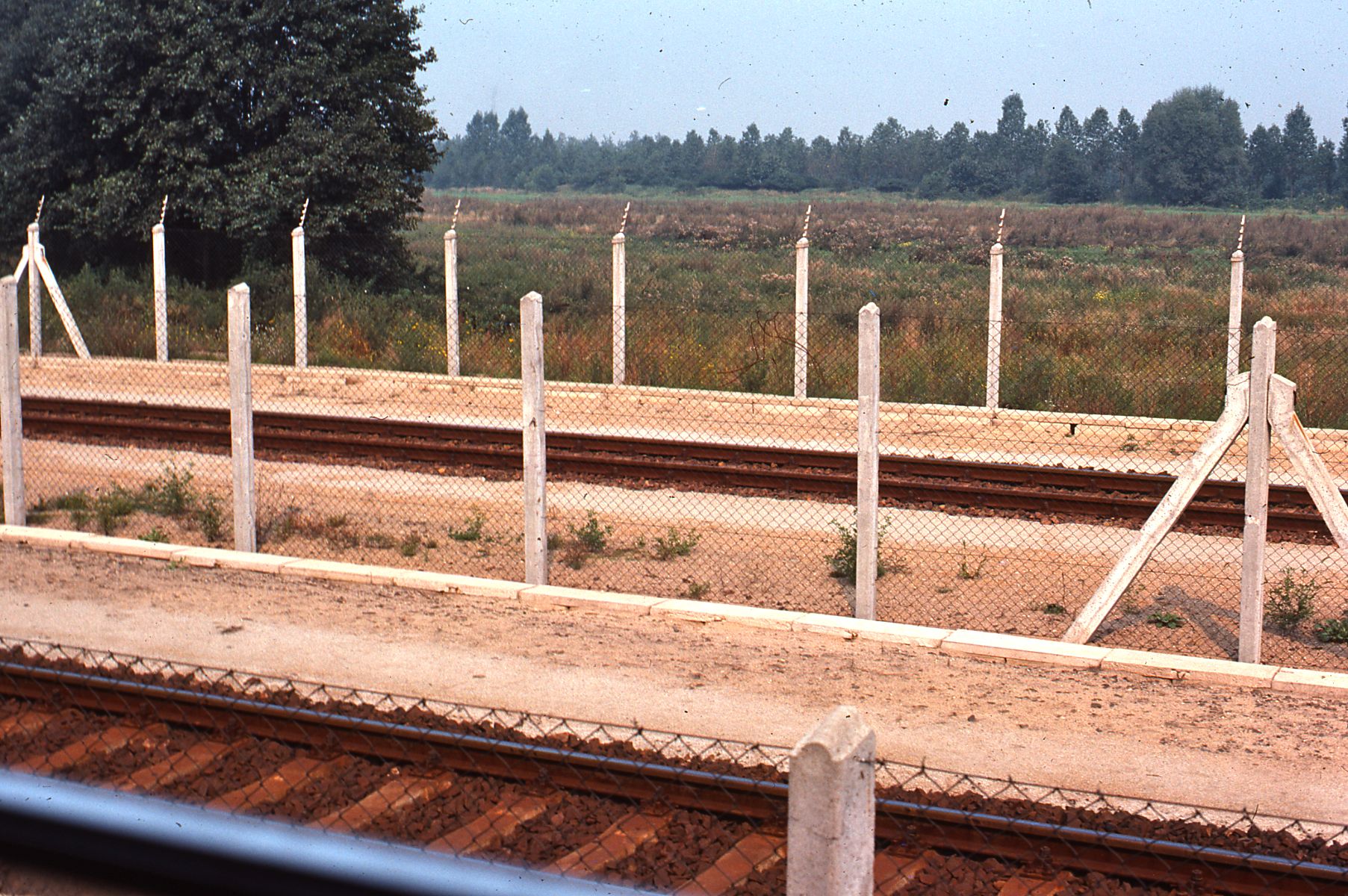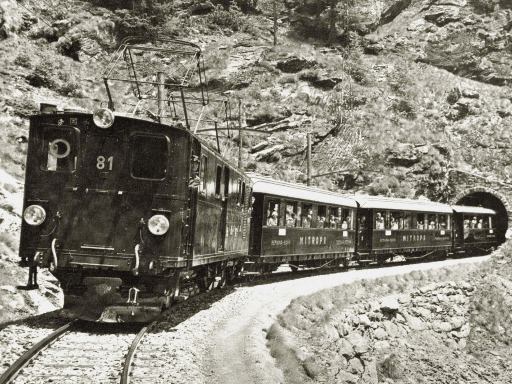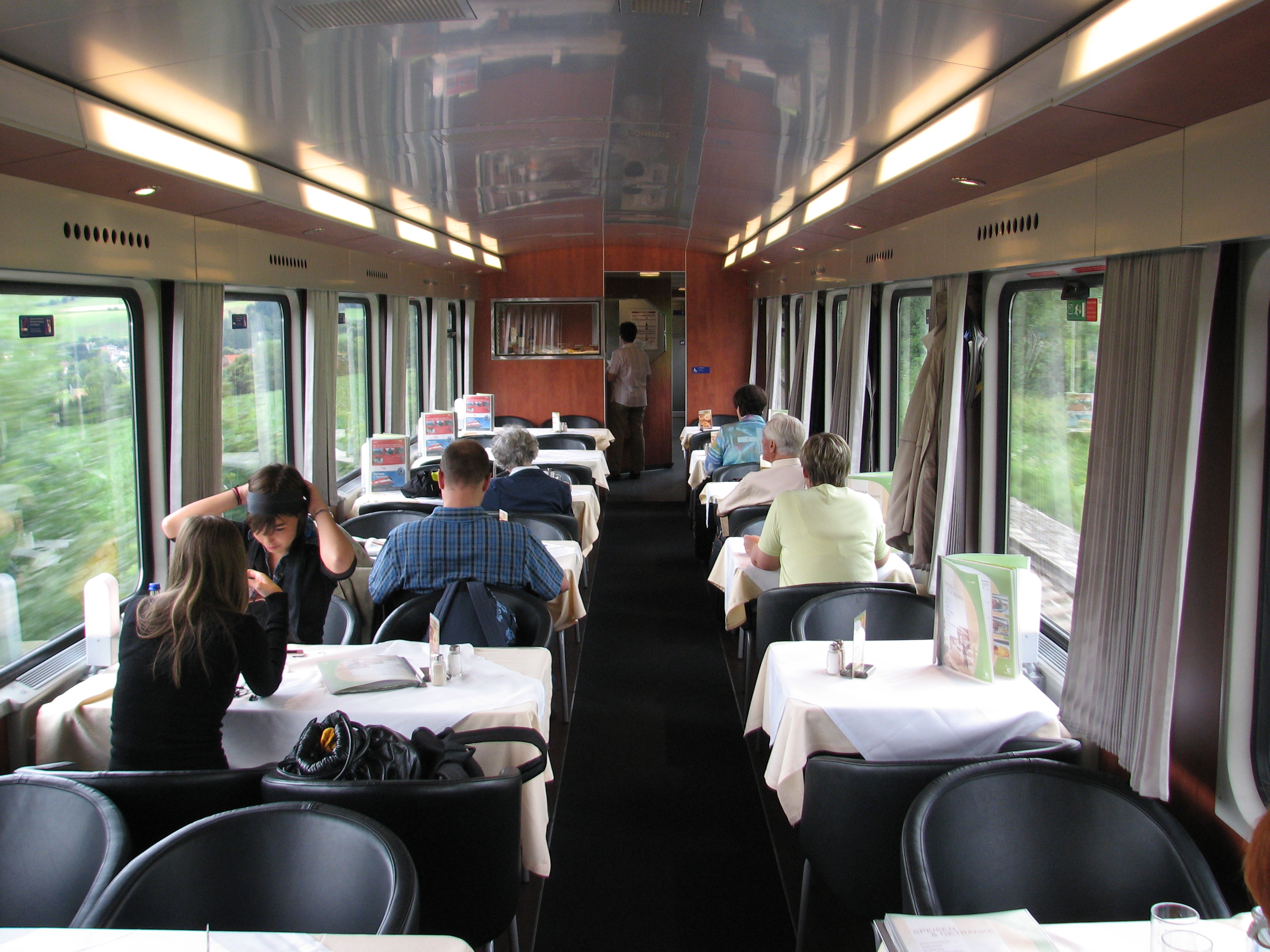|
Deutsche Schlafwagen- Und Speisewagengesellschaft
The German Sleeper and Dining Car Company (''Deutsche Schlafwagen- und Speisewagengesellschaft'', later the ''Deutsche Service-Gesellschaft der Bahn'' or ''DSG'') was a subsidiary of Deutsche Bundesbahn with its headquarters in Frankfurt am Main, that emerged from the Mitropa infrastructure left in West Germany in 1949. It existed until 1994 when it was combined with the East German Mitropa to form ''Mitropa AG''. History The DSG provided its own sleepers until 1974 and its own dining cars until 1966 and also ran the DB's half-diners, buffet, snack bar and couchette cars, the US troop trains in Germany, the German ferries of the Vogelfluglinie and the restaurants and bars on many stations in the Federal Republic of Germany (including the West Berlin restaurants at Bahnhof Zoo). In addition there were club cars, that were frequently hired by firms and other excursion companies and the "InterCity Hotels" that appeared in the 1980s. The coaching stock used stemmed mainly from the p ... [...More Info...] [...Related Items...] OR: [Wikipedia] [Google] [Baidu] |
Deutsche Bundesbahn
The Deutsche Bundesbahn or DB (German Federal Railway) was formed as the state railway of the newly established Federal Republic of Germany (FRG) on 7 September 1949 as a successor of the Deutsche Reichsbahn-Gesellschaft (DRG). The DB remained the state railway of West Germany until after German reunification, when it was merged with the former East German Deutsche Reichsbahn (DR) to form Deutsche Bahn, which came into existence on 1 January 1994. Background After World War II, each of the military governments of the Allied Occupation Zones in Germany were ''de facto'' in charge of the German railways in their respective territories. On 10 October 1946, the railways in the British and American occupation zones formed the ''Deutsche Reichsbahn im Vereinigten Wirtschaftsgebiet'' (German Imperial Railway in the united economic area), while on 25 June 1947, the provinces under French occupation formed the Südwestdeutsche Eisenbahn. With the formation of the FRG these succe ... [...More Info...] [...Related Items...] OR: [Wikipedia] [Google] [Baidu] |
Frankfurt Am Main
Frankfurt, officially Frankfurt am Main (; Hessian: , "Frank ford on the Main"), is the most populous city in the German state of Hesse. Its 791,000 inhabitants as of 2022 make it the fifth-most populous city in Germany. Located on its namesake Main River, it forms a continuous conurbation with the neighboring city of Offenbach am Main and its urban area has a population of over 2.3 million. The city is the heart of the larger Rhine-Main metropolitan region, which has a population of more than 5.6 million and is Germany's second-largest metropolitan region after the Rhine-Ruhr region. Frankfurt's central business district, the Bankenviertel, lies about northwest of the geographic center of the EU at Gadheim, Lower Franconia. Like France and Franconia, the city is named after the Franks. Frankfurt is the largest city in the Rhine Franconian dialect area. Frankfurt was a city state, the Free City of Frankfurt, for nearly five centuries, and was one of the most import ... [...More Info...] [...Related Items...] OR: [Wikipedia] [Google] [Baidu] |
Mitropa
Mitropa was a catering company best known for having managed sleeping car, sleeping and dining cars of different German railways for most of the 20th century. Founded in 1916, the name "Mitropa" is an abbreviation of ''Mitteleuropa'' (German language, German for Central Europe). The railway carriages displayed a distinct burgundy-red livery with the Mitropa logo. Since a 2002 reorganization, when the onboard catering branch was taken over by Deutsche Bahn, DB DB Fernverkehr, Fernverkehr, the company only provided stationary food services for rail and road customers. The remaining business was sold to Compass Group in 2004 and merged into the SSP Group, Select Service Partner (SSP) subsidiary in 2006. History The company was founded during World War I on 24 November 1916, as ' (German language, German for ''Central European Sleeping and Dining Cars Incorporated''). Its founders included different railway companies of the Central Powers, i.e. German Empire, Germany and Austria-Hun ... [...More Info...] [...Related Items...] OR: [Wikipedia] [Google] [Baidu] |
West Germany
West Germany is the colloquial term used to indicate the Federal Republic of Germany (FRG; german: Bundesrepublik Deutschland , BRD) between its formation on 23 May 1949 and the German reunification through the accession of East Germany on 3 October 1990. During the Cold War, the western portion of Germany and the associated territory of West Berlin were parts of the Western Bloc. West Germany was formed as a political entity during the Allied occupation of Germany after World War II, established from eleven states formed in the three Allied zones of occupation held by the United States, the United Kingdom, and France. The FRG's provisional capital was the city of Bonn, and the Cold War era country is retrospectively designated as the Bonn Republic. At the onset of the Cold War, Europe was divided between the Western and Eastern blocs. Germany was divided into the two countries. Initially, West Germany claimed an exclusive mandate for all of Germany, representing itself as t ... [...More Info...] [...Related Items...] OR: [Wikipedia] [Google] [Baidu] |
East German
East Germany, officially the German Democratic Republic (GDR; german: Deutsche Demokratische Republik, , DDR, ), was a country that existed from its creation on 7 October 1949 until its dissolution on 3 October 1990. In these years the state was a part of the Eastern Bloc in the Cold War. Commonly described as a communist state, it described itself as a socialist "workers' and peasants' state".Patrick Major, Jonathan Osmond, ''The Workers' and Peasants' State: Communism and Society in East Germany Under Ulbricht 1945–71'', Manchester University Press, 2002, Its territory was administered and occupied by Soviet forces following the end of World War II—the Soviet occupation zone of the Potsdam Agreement, bounded on the east by the Oder–Neisse line. The Soviet zone surrounded West Berlin but did not include it and West Berlin remained outside the jurisdiction of the GDR. Most scholars and academics describe the GDR as a totalitarian dictatorship. The GDR was established i ... [...More Info...] [...Related Items...] OR: [Wikipedia] [Google] [Baidu] |
Sleeping Car
The sleeping car or sleeper (often ) is a railway passenger car (rail), passenger car that can accommodate all passengers in beds of one kind or another, for the purpose of sleeping. George Pullman was the American innovator of the sleeper car. The first such cars saw sporadic use on American and English railways in the 1830s; they could be configured for Coach (rail), coach seating during the day. History Possibly the earliest example of a sleeping car (or ''bed carriage'', as it was then called) was on the London & Birmingham and Grand Junction Railways between London and Lancashire, England. The bed carriage was first made available to first-class passengers in 1838. In the spring of 1839, the Cumberland Valley Railroad pioneered sleeping car service in America with a car named "Chambersburg", between Chambersburg, Pennsylvania, Chambersburg and Harrisburg, Pennsylvania. A couple of years later a second car, the "Carlisle", was introduced into service. [...More Info...] [...Related Items...] OR: [Wikipedia] [Google] [Baidu] |
Dining Car
A dining car (American English) or a restaurant car (British English), also a diner, is a railroad passenger car that serves meals in the manner of a full-service, sit-down restaurant. It is distinct from other railroad food service cars that do not duplicate the full-service restaurant experience, such as buffet cars, cars in which one purchases food from a walk-up counter to be consumed either within the car or elsewhere in the train. Grill cars, in which customers sit on stools at a counter and purchase and consume food cooked on a grill behind the counter are generally considered to be an "intermediate" type of dining car. History United States Before dining cars in passenger trains were common in the United States, a rail passenger's option for meal service in transit was to patronize one of the roadhouses often located near the railroad's "water stops". Fare typically consisted of rancid meat, cold beans, and old coffee. Such poor conditions discouraged many from makin ... [...More Info...] [...Related Items...] OR: [Wikipedia] [Google] [Baidu] |
Vogelfluglinie
The (German) or (Danish) is a transport corridor between Copenhagen, Denmark, and Hamburg, Germany. As the Danish and German names (literally: '' bird flight line'') imply, the corridor is also an important bird migration route between arctic Scandinavia and Central Europe. History Proposals for a more direct "bird flight line" date back from the 1920s. Construction was started on the Danish side in 1941 after the Nazi occupation force pushed the matter, but work was halted again in 1946. After World War II, Warnemünde (near Rostock) was included in the territory of East Germany. Political divisions made traffic between Denmark and West Germany via Warnemünde inconvenient. From 1951 to 1963 a ferry line from Gedser to Großenbrode operated as a temporary solution. In addition, traffic between Copenhagen and Hamburg would either be directed over the Great Belt ferry, Funen and Jutland or the Gedser-Warnemünde ferry. Construction of the "bird flight line" was restarted i ... [...More Info...] [...Related Items...] OR: [Wikipedia] [Google] [Baidu] |
Restaurants
A restaurant is a business that prepares and serves food and drinks to customers. Meals are generally served and eaten on the premises, but many restaurants also offer take-out and food delivery services. Restaurants vary greatly in appearance and offerings, including a wide variety of cuisines and service models ranging from inexpensive fast-food restaurants and cafeterias to mid-priced family restaurants, to high-priced luxury establishments. Etymology The word derives from early 19th century from French word 'provide food for', literally 'restore to a former state' and, being the present participle of the verb, The term ''restaurant'' may have been used in 1507 as a "restorative beverage", and in correspondence in 1521 to mean 'that which restores the strength, a fortifying food or remedy'. History A public eating establishment similar to a restaurant is mentioned in a 512 BC record from Ancient Egypt. It served only one dish, a plate of cereal, wild fowl, and on ... [...More Info...] [...Related Items...] OR: [Wikipedia] [Google] [Baidu] |
Parlor Car
A parlor car (or parlour car outside the United States of America) is a type of passenger coach that provides superior comforts and amenities compared to a standard coach. History Parlor cars came about on United States railroads to address the absence of separate class accommodations. In the United Kingdom and Europe, passenger trains carried first-, second- and third-class coaches, with the first-class coaches offering the best seating and costing the most. In contrast, American trains offered a flat rate and standard accommodations. For 19th-century writers this represented a difference between class-bound Europe and the democratic United States. Parlor accommodations were appreciated by those who used them because of their exclusivity. H. L. Mencken called the parlor car "the best investment open to an American": Most parlor cars were found on daytime trains in the Northeast United States. In comparison to a standard coach, parlor cars offered more comfortable seating and ... [...More Info...] [...Related Items...] OR: [Wikipedia] [Google] [Baidu] |
Sekt
Sparkling wine is a wine with significant levels of carbon dioxide in it, making it fizzy. While the phrase commonly refers to champagne, European Union countries legally reserve that term for products exclusively produced in the Champagne region of France. Sparkling wine is usually either white or rosé, but there are examples of red sparkling wines such as the Italian Brachetto, Bonarda and Lambrusco, and the Australian sparkling Shiraz. The sweetness of sparkling wine can range from very dry ''brut'' styles to sweeter ''doux'' varieties (French for 'hard' and 'soft', respectively).J. Robinson (ed) ''"The Oxford Companion to Wine"'' Third Edition pp 656–660, Oxford University Press 2006 . The sparkling quality of these wines comes from its carbon dioxide content and may be the result of natural fermentation, either in a bottle, as with the traditional method, in a large tank designed to withstand the pressures involved (as in the Charmat process), or as a result of simple ... [...More Info...] [...Related Items...] OR: [Wikipedia] [Google] [Baidu] |





.jpg)
